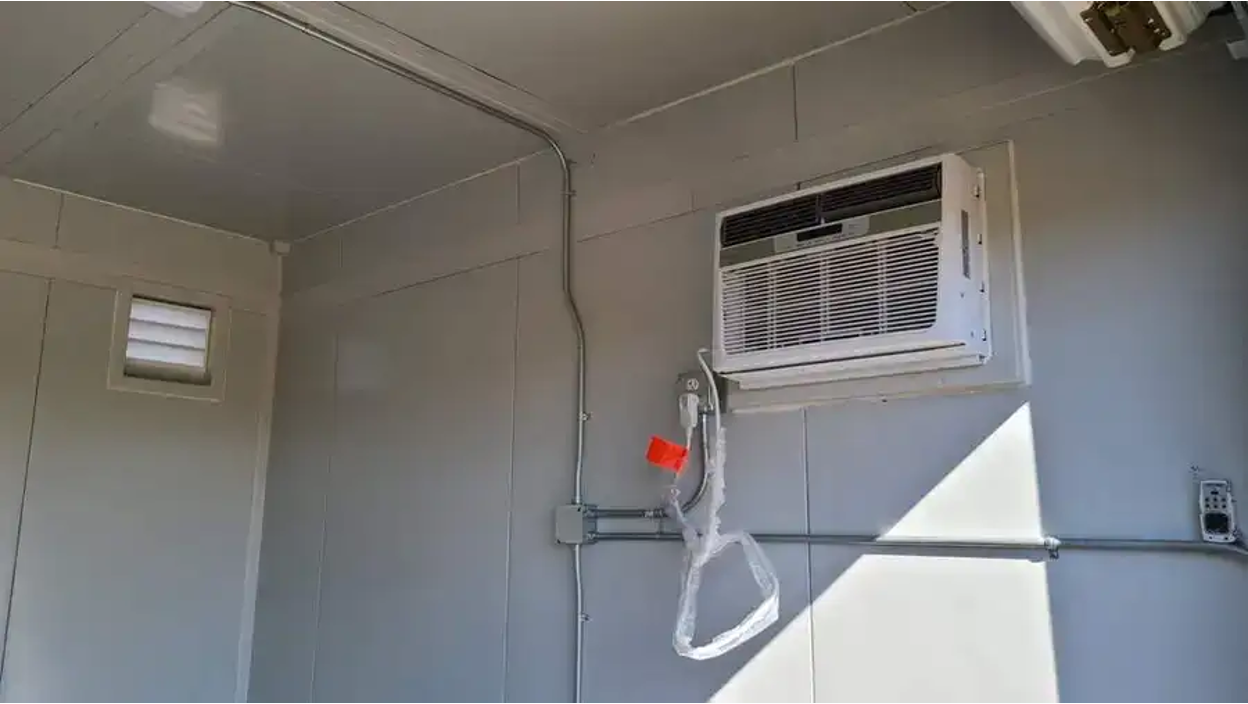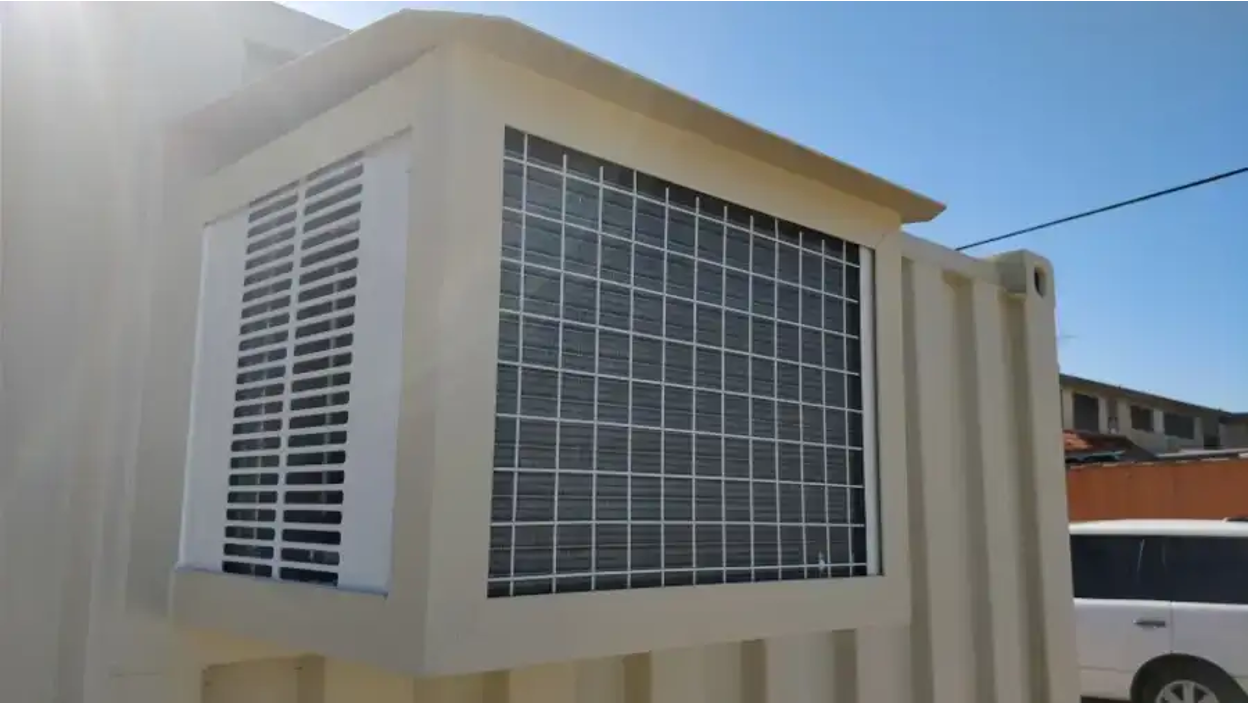Can You Add Air Conditioning To A Shipping Container?
Get a quoteCan You Add AC to a Shipping Container?
Key Takeaways
- Adding air conditioning to a shipping container is feasible with the right unit and insulation.
- Proper insulation can reduce energy consumption and improve cooling efficiency.
- Consider the container's intended use to determine the necessary cooling capacity.
- Alternative cooling solutions for shipping containers include ventilation and coolers.
- Conexwest is a trusted shipping container provider with reliable fabrication services all over the USA.
Can You Add Air Conditioning To A Shipping Container?
TL;DR: Yes, you can add air conditioning to a shipping container! And your options of ACs are many, including wall-mounted units, mini-split systems, and portable air conditioners.
Why you should have one for your container:
- Temperature Regulation: Air conditioning helps maintain a consistent temperature inside the container, which is important for protecting sensitive items such as electronics, pharmaceuticals, and perishables.
- Humidity Control: Air conditioning systems reduce humidity levels within the container. This is important for preventing mold and mildew growth, which can damage stored items.
- Extended Storage Periods: For items that need to be stored for longer durations, climate-controlled containers can prevent damage caused by extreme temperatures and humidity fluctuations.
- Comfortable Workspaces: If the shipping container is used as an office or workspace, air conditioning provides a comfortable environment for employees and enhances productivity.
- Versatility of Use: Climate-controlled shipping containers can be adapted for various purposes, including mobile offices, temporary housing, or workshops.
Conexwest, a leader in shipping and storage solutions based in Northern California, offers new, used, and refurbished containers from 10ft to 45ft, with fast delivery within 3–7 days and container fabrication options like adding shelves and locks. We serve over 10,000 customers nationwide, including prestigious clients like the U.S. Navy and Google. As an ISO 9001 and AWS-certified company, we ensure top quality and competitive pricing. |
Challenges Of Adding Air Conditioning To Shipping Containers

HVAC usually needs to be complemented with vents for an appropriate internal environment.
1. Structural Modifications
- Cutting and Framing: Installing an air conditioning unit typically requires cutting a hole in the container's steel walls, which can compromise its structural integrity if not done correctly. Thus, we recommend you work with experienced professionals of Conexwest who know how to install various types of HVAC systems such as standard ACs, Hazardguard ACs, and Bard ACs.
- Weight Considerations: Depending on the type of air conditioning system chosen (e.g., wall-mounted, mini-split), the added weight could affect the container's balance and stability, especially if it is being transported frequently.
2. Insulation Requirements
- Insulation Needs: To maximize the efficiency of the air conditioning unit, proper insulation is necessary. Without adequate insulation, the cooling system will have to work harder to maintain desired temperatures.
3. Power Supply and Energy Efficiency
- Electrical Fit-Out: Air conditioning units require a reliable power source. Depending on the size and type of unit, you may need to upgrade the electrical system within the container, which can involve significant additional costs and planning.
- Energy Consumption: While modern air conditioning units are designed to be energy-efficient, their operational costs can still be high if not properly sized for the container's dimensions.
Alternative Cooling Solutions For Shipping Containers
- Ventilation Systems: Install vents (such as louvered vents) at the top and bottom of the container to promote airflow and allow hot air to escape.
- Insulation: Use materials like foam board, spray foam, or fiberglass insulation to regulate internal temperatures by slowing heat transfer.
- Portable Air Conditioners: These units can be easily installed inside the container and require minimal modifications, providing effective cooling for smaller spaces.
- Evaporative Coolers: Best suited for dry climates, these systems use water evaporation to cool the air, making them energy-efficient alternatives to traditional AC units.
- Reflective Coatings or Light Paint: Applying reflective paint or using light-colored exteriors can help deflect sunlight and reduce heat absorption.
How Conexwest Can Help You Install HVAC To Your Shipping Container

Conexwest is your comprehensive solution for your shipping container-related needs.
Our experts at Conexwest can assist you in installing HVAC systems in your shipping container from start to finish without losing its integrity. In fact, we have got many options too! That includes standard ACs, Hazardguard ACs, and Bard ACs.
Here’s why you should choose us:
- One-Stop Shop: We handle everything to simplify the process for you.
- Expertise: With over years of experience in engineering and design, our team knows how to fit your HVAC system correctly and efficiently.
- Transparent Pricing: We provide upfront pricing with no hidden fees, allowing for better budget management.
- Nationwide Services: Our delivery and installation services are spread across the USA.
Frequently Asked Questions (FAQs)
- What size air conditioner is suitable for a shipping container?
The size of the air conditioner you need depends on the size of the container and the level of insulation. A 5,000 to 10,000 BTU unit is sufficient for a standard 20ft container. However, larger containers or those with poor insulation may require a more powerful unit.
- How does insulation affect air conditioning needs?
Insulation significantly impacts the efficiency of an air conditioning system in a shipping container. Proper insulation reduces heat transfer, allowing the air conditioner to maintain a stable temperature with less effort.
- Do I need ventilation if I have air conditioning?
Yes, proper ventilation is still important even with air conditioning. It helps maintain air quality and prevents moisture buildup, which can lead to mold and rust inside the container.
- How do I maintain the air conditioning system in my shipping container?
Regular maintenance includes:
- Cleaning or replacing filters
- Checking for refrigerant leaks
- Keeping the unit free from debris
- Inspecting seals and insulation to maintain efficiency
- What types of customization options does Conexwest provide for shipping containers?
We provide extensive customization services, including the addition of windows, doors, vents, partitions, shelving systems, and specialized features like temperature control for cold storage containers. You can also choose customized paint colors and branding options.
